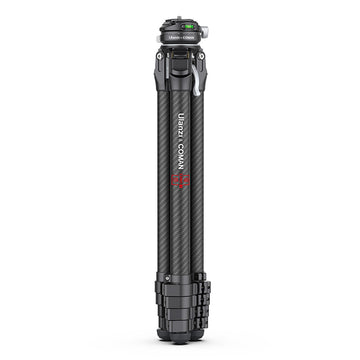Unlock the Secrets of Stunning Cinematic Shots with Your Phone Camera Slider!
Unlock the Secrets of Stunning Cinematic Shots with Your Phone Camera Slider!
In the age of mobile filmmaking, where everyone has access to powerful cameras in their pockets, the art of storytelling has never been more accessible. Cinematic shots are the heartbeat of any compelling narrative, and achieving them with a phone camera slider can elevate your footage from ordinary to extraordinary. A phone camera slider allows filmmakers to capture smooth, dynamic movements that bring a professional touch to their projects. As more people venture into the world of videography, understanding how to utilize these tools effectively can set your work apart. Whether you're shooting a short film, a travel vlog, or a family event, mastering the art of cinematic shots with a phone camera slider is an essential skill that can enhance your storytelling capabilities.

Understanding the Phone Camera Slider
A phone camera slider is a tool designed to create smooth horizontal or vertical movements for your smartphone while filming. It consists of a track on which the phone is mounted, allowing it to glide seamlessly from one position to another. The basic components of a slider include the track, the carriage that holds the phone, and adjustable legs for stabilization. The primary advantage of using a slider is that it minimizes the shakiness often associated with handheld shots, providing fluidity and professionalism. By incorporating a slider into your filming toolkit, you can achieve a range of cinematic effects, from simple panning shots to complex tracking movements that follow your subject. With this essential understanding, you can begin to explore the creative possibilities that a phone camera slider offers to enhance your filmmaking.
Setting Up Your Phone Camera Slider
Setting up your phone camera slider may seem daunting at first, but with a few simple steps, you'll be capturing stunning shots in no time. Start by selecting a flat, stable surface to position your slider. Once you have your slider in place, securely mount your phone onto the carriage. It's crucial to ensure that your phone is balanced to avoid any tipping during movement. Depending on your desired shot, you can adjust the slider for either a long slide or a short, quick movement. For beginners, starting with a simple horizontal movement can be effective, while more advanced users may experiment with vertical or diagonal shots. Additionally, consider using a tripod with adjustable height to enhance your slider's versatility. My friend, an aspiring filmmaker, once told me how this simple setup transformed her home videos into cinematic masterpieces, proving that a well-set slider can make all the difference.
Techniques for Cinematic Shots
To achieve cinematic shots, it's essential to focus on maintaining fluidity and creativity. Experiment with different camera movements, such as panning, tilting, or tracking shots. Utilize slow and steady motions to add a sense of atmosphere, revealing the essence of the setting. Remember, the key is to tell a story; your shots should evoke emotions and engage the audience. Think about the composition and framing, paying attention to depth and details that enrich the scene. By diving into various techniques and being open to exploring new angles, you can create mesmerizing visuals that captivate viewers.
Common Mistakes to Avoid
Even seasoned filmmakers can encounter pitfalls when using a phone camera slider. One of the most common mistakes is failing to stabilize the slider properly, which can lead to shaky footage. To avoid this, always ensure your slider is on a flat surface and that your phone is securely mounted. Another frequent issue is poor framing; it's essential to plan your shots in advance to maintain focus on your subject. Additionally, overusing slider movements can distract from the story; sometimes less is more. Instead, use the slider sparingly to enhance key moments rather than for every shot. I recall a short film project where my team was so excited about using the slider that we overdid it, leading to a chaotic viewing experience. Learning to balance movement with stillness can elevate your shots significantly.
Editing Your Cinematic Shots
Once you've captured your shots, the next step is editing to enhance their cinematic quality. Editing plays a crucial role in bringing your vision to life. Start with color grading; adjusting the colors can significantly alter the mood of your footage. Use software that allows you to tweak brightness, contrast, and saturation, giving your shots a professional touch. Adding transitions between your clips can also smooth the flow of your narrative. For instance, a fade-in or fade-out can create a seamless connection between scenes. Additionally, sound design is equally important; incorporating ambient sounds or a fitting background score can elevate the emotional impact of your footage. A close friend of mine, who specializes in video editing, always emphasizes the importance of sound, stating it can make or break the cinematic experience. By focusing on these editing techniques, you'll bring your phone camera slider footage to new heights and capture the attention of your audience.
Mastering the Art of Cinematic Filmmaking
In conclusion, using a phone camera slider for cinematic shots can transform your filmmaking from ordinary to extraordinary. By understanding how to set up your slider, employing effective techniques, avoiding common mistakes, and focusing on editing, you can unlock a world of creative possibilities. Whether you're an amateur filmmaker or just looking to enhance your personal videos, practicing these skills will not only improve your technical proficiency but also inspire your storytelling. So, grab your phone, set up that slider, and start experimenting with the techniques discussed. You never know what cinematic masterpiece you might create!
- Education
- Course
- Books
- Drawing
- Question
- Film
- Fitness
- Food
- Games
- Gardening
- Health
- Home
- Literature
- Music
- Networking
- Other
- Programming
- Religion
- Shopping
- Sports
- Curriculm
- Wellness


